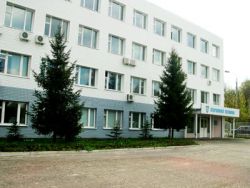Advancement and development of new sensors marked Forteza
- Written by Forteza Russia
- Published in Physical Security
OOO Okhrannaya technika (trademark Forteza) is the fastest-growing company. We watch over the developing situation on the security market of the technical solutions and correct the line of our activities quickly.
There are some examples only in the present article describing our achievement for this way.
We continue to perfect the microwave bistatic sensors. The basic samples are FORTEZA-500, FORTEZA-300 and FMW-3. These sensors operate reliably in difficult conditions and are very popular among other products on the Russian security market. That’s why they became a base for developing a new line of the microwave sensors – FORTEZA-50, FORTEZA-100 and FORTEZA-200. These solutions are more lightweight and compacted. Changing the detection zone length, you can reduce the detection zone width as well more than twofold. There are not “dead” zones. The intellectual signal micro processing is used in these sensors and the interference immunity is reduced considerably. To operate on one perimeter site, the sensors are issued with four frequency letters, and also they can be synchronized over the cable.
A special (anti-vandal) metal case is issued for some operating conditions.
All the new sensors have USB and RS-485 interface. It permits to adjust the sensors over PC.
An important note: the price for the new sensors during the serial production is reduced.
We offer the triboelectric sensor TRIBO-4 for some perimeter fences. This sensor has four (for two flanks) sensing elements (cables) fixed on the fence. The sensor detects any intruder attempts to climb over the fence or to destroy it. The intellectual signal micro processing and the remote control are used as well. It eliminates completely false alarms provoked by some influence (ball, stone, wind, rain, glazed rain, etc.). An automatic adaptation to the ambient conditions is used in the sensor TRIBO-4: the corresponding installation-specific settings are recorded and saved in the device. Such interferences as VHF, power lines, lightning, and planes at the altitude more than 100 m don’t influence on the sensor operation. The sensor TRIBO-4 doesn’t require any readjustment and difficult technical service. The mounting is not so difficult: it is enough to fasten the cables and the central unit, to connect the sealed connectors.
But there are some perimeter sites where it is impossible or is very difficult to apply the microwave bistatic detection systems (doors, turn passages, transport gates, quays, etc.). In this case the microwave monostatic sensors are usually used. They don’t require the installation of the second unit. But such Doppler sensors have a disadvantage: an irregular sensitivity along to the detection zone and poor interference immunity. The linear-frequency modulation application does not reduce interference up to the necessary level. The specialists of our manufacturer decided this problem after producing the microwave monostatic sensors FM and FM (24) line.
The radar detection method with the linear-frequency modulation was applied as basic one in the sensors FM and FM (24) line. But the difference is a special Doppler spectrum analyzer on the digital signal processor. It separates and compares the signal levels with the threshold value in the bands field. Each band corresponds to the specific site of the detection zone. When you control the sensor, you can limit the detection zone length and configure according to the real objects situated on the perimeter sector to protect. So, for example, you can disconnect several sectors of the detection zones for the “approval passages”. You can also disconnect the sector where there is a source of a “difficult” interference. However, all the rest sectors are active. As a result of it, the general sensitivity is high and the interference immunity increases in comparison with other sensors operating on the principle of the linear-frequency modulation. It performs easy during the adjustment: use some switches under the sealed cover. The general sensitivity controller is situated there.
There is another distinctive feature of the sensors FM and FM (24) line-the ability to adjust the signal, the thresholds and the sensitivity amplification in every sector of the detection zone. You can switch ON/OFF separate or neighbor sectors but install the necessary alternative sensitivity along to the detection zone. At present this method is maximum effective to provide a high reliability of the microwave monostatic sensors in the different interference conditions: birds, small animals, traffic, grass, bushes, branches, etc.
The necessary thresholds levels and the signal amplification coefficients for each sector of the detection zone are recorded in the non-volatile storage over RS-485 interface. It performs over PC. You can see all the necessary output signals for each sector of the detection zone.
The sensors modification FM and FM (24) line is developing where the ground influence and other interference (the polarization change of the electromagnetic field) will be reduced.
The sensors FM and FM (24) are issued with the middle frequency 24,125 G

